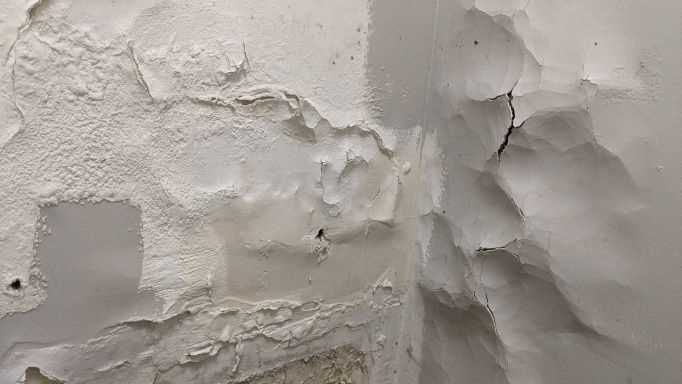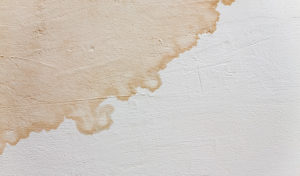Detecting Stains from Water on Wall Surfaces - Tips to Assess and Address Them
Detecting Stains from Water on Wall Surfaces - Tips to Assess and Address Them
Blog Article
Are you currently interested in guidance on Water Stains on Walls?

Water stains on wall surfaces are not pleasant to the eyes. Often it appears practically inescapable to experience water discolorations on walls in houses.
House owners living in damp areas regularly deal with the anxiety of water spots on walls. With precise as well as well-rounded info on the causes of water discolorations and prompt repair work processes, you will always be an action in advance of such events.
3 Common Reasons For Water Stains on Walls
Contrary to common belief, water spots on walls do not constantly originate from bad building products. There are a number of reasons for water stains on wall surfaces. These include:
Wet
When hot wet air meets with dry cold air, it causes water droplets to form on the walls of structures. When there is heavy steam from cooking or showers, this occurs in shower rooms as well as kitchens. The water beads can tarnish the bordering walls in these parts of your home as well as spread to various other locations.
Moist or condensation affects the roofing system and wall surfaces of buildings. This creates them to appear darker than various other areas of the home. When the wall surface is wet, it creates an appropriate environment for the growth of microbes and also fungi. These might have damaging effects on health, such as allergies and breathing conditions.
Poor Drainage
When making a structure plan, it is essential to make certain appropriate drainage. This will protect against water from seeping into the wall surfaces. Where the drainage system is blocked or missing, underground wetness accumulates. This web links to excessive dampness that you observe on the walls of your building.
The leading reason of wet walls, in this situation, can be a poor drain system. It can also be because of bad administration of sewage pipes that run through the building.
Pipe Leaks
Many homes have a network of water pipes within the wall surfaces. This makes certain that the pipelines are faraway from the reach of harmful rodents. It always raises the stability of such pipelines, as there is little oxygen within the walls. This discourages corrosion.
A disadvantage to this is that water leakage impacts the walls of the building and also creates prevalent damages. An indication of defective pipelines is the appearance of a water discolor on the wall surface.
Pro Idea
A houseplant in your home likewise increases its moisture. If the home is currently moist, you might desire to present houseplants with minimal transpiration. An example of suitable houseplants is succulents.
Water Discolorations on Wall Surface: Fixing Tips
Homeowners would generally desire a quick fix when managing water discolorations. Yet, they would certainly soon understand this is detrimental as the water stains reoccur. Below are a few valuable ideas that will certainly guide you in the repair work of water spots on walls:
Final thought
No one wants to have water discolorations on walls in their house, it can take place to the finest of us. This write-up gives you take advantage of, as you currently know exactly how to manage this accident if it does happen.
It is constantly best to hire specialist solutions to help repair the problems in your house.
Occasionally it seems almost inescapable to experience water discolorations on wall surfaces in residences.
In contrast to preferred idea, water discolorations on wall surfaces do not constantly stem from inadequate structure products. There are several causes of water stains on walls. The water droplets can discolor the surrounding walls in these components of your residence as well as spread to other locations.
Below are a few valuable suggestions that will certainly assist you in the repair work of water discolorations on walls:
How to identify and deal with water spots on walls and ceilings
Where is water coming from?
Where is the water coming from? Is the roof above it? Or how about a bathroom? Potentially a leaky pipe? Whatever is up, it’s wet. Repairs cannot be attempted until the source is identified and the necessary repairs made. Otherwise, repairs are moot. The water stain will just come back.
Many times the repair is simple. A common source is water seepage. A shower pan or piping that once had be caulked could have sprung loose causing a slowly leaking pipe. Address potential piping issues before proceeding.
If it’s the roof that’s up, check it for leaks. Roof water is not always attributed to a roof problem. Depending where in the country you are located, you could be looking at an ice dam, which means new insulation and repairs. Roofs can leak, shingles can slip. Again, the repairs must be made before any patch work can happen inside.
Why is there a water spot?
Water stain repairs always come last. Repairing a water stain inside your home before addressing the issue is going to lead to disappointment. Repairs will quickly be taken apart by a continuous leak. You will need to see how wet the area actually is. Potentially, you could be looking at taking out a piece of the ceiling or drywall to get down to a dry bones before moving forward. If you neglect this step, you are sure to have bleed through on the repair.
How to go about fixing the problem?
Clean.
Once the underlying cause of the stain is dealt with, you can begin by cleaning the stain with bleach. Mix one cup of bleach with three cups of warm water and wipe the wall down. This mixture will also remove any leftover mildew, dirt or dust that could prevent a good paint job. Rinse the solution off with a spray bottle and towel.
Prep.
Get a drop cloth set up on the floor below your project. If the mess is on a ceiling, protective gloves and goggles will be crucial. After the area is dry, tape off any areas, like trim, you want to keep paint-free.
Prime.
Use a good quality base coat of stain-blocking primer. Your ceiling is probably painted with an interior latex paint, meaning it is water soluble. Water will destroy this kind of paint and cause lingering issues with your job. The base coat will block this from happening again in the future.
Paint.
After ample drying time, apply at least two coats of ceiling paint, with drying time in between. Oil-based ceiling paints will contain more volatile organic compounds (VOCs) and fumes, so take precautions not to expose yourself to this paint for too long.
Your ceiling should look pristine a new. Provided the problem has been completely solved, there will be no returning halo in your paint job.

I am just very taken with Indicators of Water Damage Behind Walls and I am praying you enjoyed my piece. Do you know another person who is sincerely interested in the subject? Feel free to share it. Thank you so much for your time spent reading it.
Get professional leak detection today. Report this page